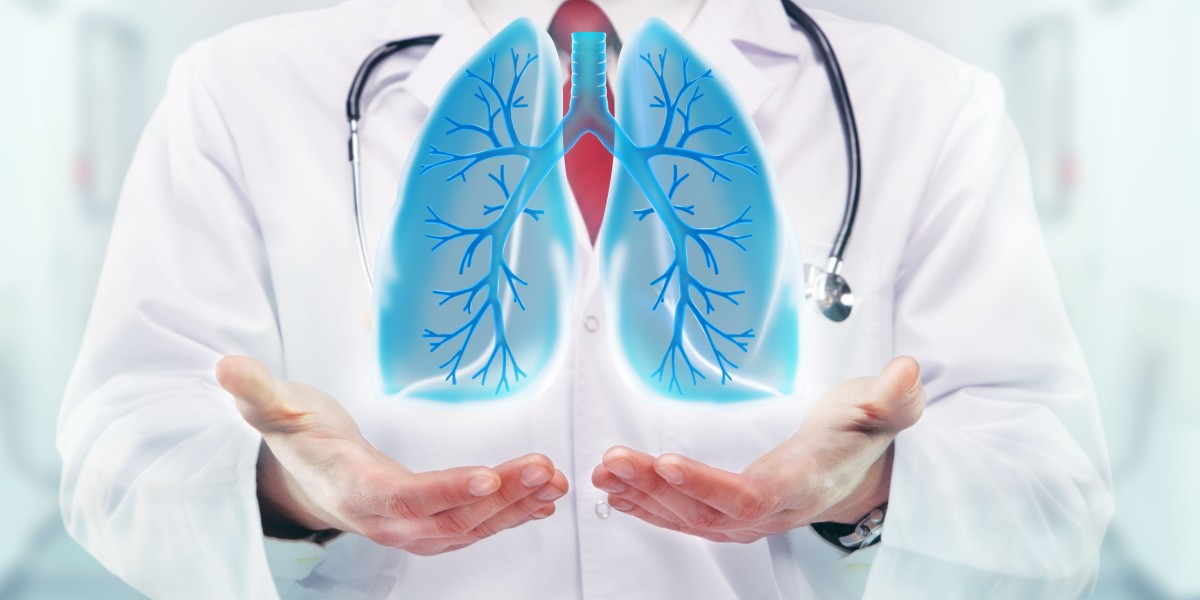Respiratory Disease Testing Testing
Pulmonary function tests (PFTs) provide objective measurements of lung function and are a basic component of respiratory disease evaluation and management. Some common PFTs include spirometry, lung volume measurements, diffusion capacity testing, and tests of respiratory muscle strength.
Spirometry measures how much air the lungs can hold and how fast it can be expelled. It evaluates two important lung volumes - the forced vital capacity (FVC), which is the total amount of air that can be forcibly exhaled after taking the deepest breath possible, and the forced expiratory volume in one second (FEV1), which is the amount of air that can be forcibly blown out in the first second of exhalation. The FEV1/FVC ratio is also calculated and helps determine if airflow is obstructed. Abnormal spirometry can indicate restrictions like fibrosis or obstructions from conditions like asthma, COPD, or bronchitis.
Lung volume measurements quantify total lung capacity (TLC), residual volume (RV), functional residual capacity (FRC), and other volumes. Elevated RV or FRC can suggest air trapping from obstructive lung diseases. Reduced TLC may indicate restrictive lung diseases that impair the lungs' ability to expand fully.
Diffusing capacity for carbon monoxide (DLCO) measures how well gases like carbon monoxide pass from the alveoli into the bloodstream. Respiratory Disease Testing A low DLCO can point to interstitial lung diseases, pulmonary vascular diseases, or lung injury.
Tests of respiratory muscle strength use pressure gauges to evaluate the inspiratory muscles (MIP) and expiratory muscles (MEP). Weakness in these muscles may signal respiratory muscle diseases or neuromuscular disorders.
Radiologic Tests
Chest x-rays and computed tomography (CT) scans provide anatomical details that can identify patterns characteristic of different lung diseases.
A chest x-ray is often the initial imaging test ordered when evaluating respiratory complaints. It can detect features of pneumonia, COPD, lung cancer, and interstitial lung diseases. However, early disease changes may not be evident on x-ray alone.
CT scanning utilizes multiple x-ray beams and a computer to generate cross-sectional images of the chest. It is more sensitive than x-rays and can reveal subtle findings missed on chest x-ray. CT is better able to identify small nodules, reveal emphysema distribution patterns, and detect signs of infiltrative lung diseases. High-resolution CT is particularly useful for evaluating interstitial lung abnormalities.
Other Respiratory Disease Testing
Other specialized imaging modalities provide additional structural or functional information.
Nuclear medicine studies like ventilation/perfusion (VQ) lung scans use inhaled radioactive tracer gases and particles analyzed by a gamma camera or PET scanner to evaluate pulmonary perfusion and ventilation. Mismatched perfusion and ventilation patterns seen on VQ scans can help diagnose pulmonary embolism.
Positron emission tomography (PET) scanning combines functional imaging with CT anatomical data. Using radioactive tracers like 18F-FDG, it can detect inflammatory changes in the lungs earlier than other tests and help distinguish benign from malignant pulmonary lesions. PET is also gaining use for evaluating therapy responses in lung cancer.
Magnetic resonance imaging (MRI) does not use ionizing radiation like x-rays or nuclear medicine techniques. It produces three-dimensional images using strong magnetic fields and radio waves. While MRI plays a lesser role in general lung evaluations, it is useful for imaging the chest wall, mediastinum, pleura, and hila. MRI can also characterize pulmonary lesions when CT findings are equivocal.
Microbiologic Testing
Microbiologic tests identify the causes of infectious respiratory diseases through direct examination, cultures, antigen detection and molecular diagnostic techniques.
Sputum samples obtained through deep cough can be examined under the microscope to look for key pathogens like pneumococcus bacteria or characteristic lung flora in patients with chronic bronchitis. Culture of sputum or other respiratory samples isolates infecting organisms and guides appropriate antibiotic therapy.
Rapid diagnostic tests detect bacterial or viral antigens in respiratory secretions through immunoassays. Examples include tests for influenza, respiratory syncytial virus (RSV), streptococcus pneumoniae, and legionella.
Nucleic acid amplification tests (NAATs) use polymerase chain reaction (PCR) technology to identify specific DNA or RNA sequences from respiratory viruses and some bacteria directly from clinical specimens. NAATs have largely replaced antigen-based testing due to their improved sensitivity. Examples include PCR-based tests for influenza, RSV, rhinovirus, coronavirus and others.
Bronchoalveolar Lavage and Biopsy
For patients with more diffuse or uncommon lung diseases, bronchoscopy with bronchoalveolar lavage (BAL) or biopsy may be needed to obtain samples from deeper in the lungs.
BAL returns fluid from the distal airspaces that can be analyzed microscopically, cultured for pathogens and subjected to other tests. It aids diagnosis of pneumonia, alveolar proteinosis, pulmonary alveolar microlithiasis and some interstitial lung diseases.
Transbronchial or surgical lung biopsy samples lung tissue for pathological examination. This allows definitive diagnosis of conditions like sarcoidosis, pulmonary fibrosis, lung cancer and infections through characteristic histologic and cytokine patterns seen under the microscope. Biopsy is usually only performed when other tests do not provide a clear diagnosis or to assess disease severity and prognosis.
An integrated approach using structural and functional studies along with microbiology and pathology allows comprehensive evaluation of respiratory diseases. No single test alone provides all the answers. The combination of clinical presentation and test findings guides accurate diagnosis, treatment decisions and management of lung conditions. Technological advances continue enhancing our capabilities to diagnose respiratory illnesses early and determine the best treatments.
Get more insights on Respiratory Disease Testing
About Author:
Money Singh is a seasoned content writer with over four years of experience in the market research sector. Her expertise spans various industries, including food and beverages, biotechnology, chemical and materials, defense and aerospace, consumer goods, etc. (https://www.linkedin.com/in/money-singh-590844163)



![Epicor Channel Partner Market Size, Share, CAGR and Trends Report [2032]](https://insta.tel/upload/photos/2024/06/RAcWXrpvHi47rgORWrSY_25_763d938e2fbc91b38882156c85788b1c_image.jpg)